Not all natural fibers are equally good for the environment. As people consider replacing traditional petrochemical fibers with naturally-derived fiber sources, it is essential that we evaluate the potential advantages and trade-offs.
Most carpets sold today are manufactured using petroleum-based fibers, such as nylon, polypropylene, or polyester. While these materials are inexpensive, convenient to manufacture, and come in a large range of qualities and colors, they contribute to landfill waste unless they are recycled or incinerated.
Carpets made from natural plant or animal fibers may be renewably sourced, carbon neutral, and 100% biodegradable and compostable. While cotton and wool are the most well known natural fibers, there are several alternative natural fibers currently being used in carpet. It is worthwhile to briefly review each of the available natural fiber options and identify the relevant sustainability considerations.
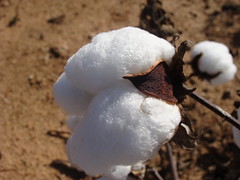 |
| Flickr/Martin LaBar (CC) |
|
Cotton is primarily grown in China and India, although the United States is also a large producer. Cotton production relies heavily on fertilizers and pesticides, but organic farming techniques are becoming more common. Cotton has a pleasant, natural feel, but is prone to showing dirt and quickly wears down in high-traffic areas. Cotton carpeting was popular in the United States before World War II but was quickly replaced once synthetic fibers became available.
|
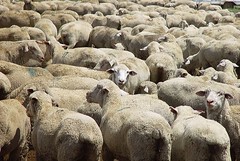 |
| Flickr/James Good (CC) |
|
Wool is collected from sheep and other animals worldwide but is primarily produced in Australia, China, the United States, and New Zealand. It is a strong and resilient fiber with natural stain-resistance. It does not give off any fumes or smells and is considered to be hypoallergenic. Wool is naturally flame retardant and has excellent thermal insulation properties. While it has long been available as a carpet in the US, wool is much more expensive than petroleum-based fibers.
|
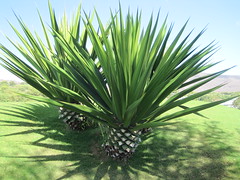 |
| Flickr/Joel Abroad (CC) |
|
Sisal is produced from an agave-like plant that is grown in Brazil, Mexico, and parts of Africa and Asia. While sisal fibers are very durable (second only to wool), they can be stained by water and fade in sunlight. While no fertilizer is necessary for the plant to thrive, the plant only produces 200-250 commercially-useful leaves during its lifetime of 7-10 years. Because fibers only make up 4% of the leaves, a large amount of waste is leftover after extracting the fibers. Research is currently focused on developing a method for producing biofuels from the waste.
|
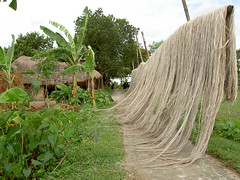 |
| Flickr/adrenalin (CC) |
|
Jute is harvested from the skin of the Jute plant, which is the second most commonly cultivated fiber plant after cotton. It thrives in the wet and warm monsoon climate of India and Bangladesh and can grow several feet tall in 4-6 months without the aid of fertilizers or pesticide. Jute fibers are soft but durable and have long been used to make burlap and twine. Jute can be used in a variety of decorative weaves and accepts most dyes readily, but is also susceptible to stains and fading.
|
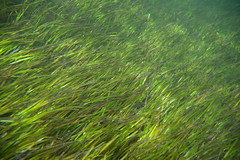 |
| Flickr/Paul and Jill (CC) |
|
Seagrass grows underwater in tropical sea marshes, but are typically cultivated in flooded paddies in China and Vietnam that can compete with rice production. It is harvested by hand, dried, and woven in its complete form to produce a hard and durable carpet. It is commonly left undyed but can be found in a variety of neutral green hues. It retains a grassy, hay-like scent that dissipates over time.
|
 |
| Flickr/Umair Mohsin (CC) |
|
Coir fibers are short fibers harvested from coconut shells, which can range from pale, fine fibers to brown, coarse fibers depending on when the coconut is harvested. Most of the cultivated coir comes from India and Sri Lanka. Coir is durable and resistant to fungus, but is also known to cause an allergic reaction in some people. A single palm tree can produce 50-100 coconuts per year. Of the fibers that make up the outer layers of the coconut, one-third is useful coir and the rest is considered a long-lived waste product that takes 20 years to decompose.
|
These are the most common natural alternatives used in flooring right now and as you can see they represent a range of properties and costs.
It's important to consider the impact of every step of the process when evaluating the sustainability profile of any of these natural alternatives. In other words, a life-cycle assessment (LCA) is necessary to evaluate the many options. Natural fibers that require a lot of fertilizer (made from oil) to grow, involve intensive extraction processes (energy), are transported over long distances, or displace food production diminish the benefits of a natural fiber. In addition to considering the production impacts, the potential reuse and recyclability of these natural fibers must be considered.
You can see the answers are complex and not easy to sort out. That’s why synthetic fibers have grown in popularity in terms of their color pallet, local origin and costs. Recycle of post-consumer is an important approach to reducing the impact of synthetic fibers and today 25-30% of all carpets that get recycled go back into new carpets as face fiber or backing.
There is another approach for an alternative fiber material: polymers made from renewable sources, such as polylactic acid. We'll talk about these materials soon. Stay tuned!






No comments:
Post a Comment